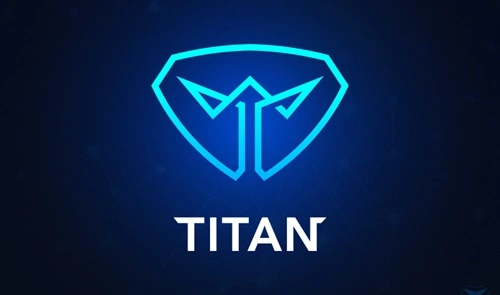Titan Company Limited, a subsidiary of the Tata Group, is a leading player in India’s consumer goods sector, particularly known for its watches, jewelry, and eyewear. The brand has a prominent presence in both domestic and international markets. As of 2024, Titan continues to evolve with its commitment to innovation and expansion. Conducting a SWOT (Strengths, Weaknesses, Opportunities, and Threats) analysis can help us gain deeper insights into the company’s current positioning and future prospects.

Titan Company Overview
Titan Company is recognized as one of the top five watch manufacturers globally and holds a strong market share in India’s jewelry segment with brands like Tanishq and Mia. The company is also known for its eyewear and perfumes. Over the years, Titan has established itself as a leader in affordable luxury, with a diversified portfolio that caters to various consumer segments. The company operates a vast retail network, with more than 1,700 stores across India.
Despite facing challenges due to the COVID-19 pandemic, Titan has managed to bounce back with robust financial performance. In FY 2023, Titan reported significant growth, fueled by the expansion of its Tanishq jewelry brand and a strong digital presence. With a growing focus on smart wearables and expanding its product line, the company is set to continue its upward trajectory.
Titan SWOT Analysis
Strengths
1. Strong Brand Recognition: Titan enjoys high brand recall, particularly in India. Its sub-brands like Tanishq (jewelry), Fastrack (youth-centric fashion), and Sonata (budget watches) have carved out their niche, ensuring strong customer loyalty.
2. Diverse Product Portfolio: Titan offers a wide range of products, from watches to eyewear, perfumes, and jewelry. This diversification reduces business risk and ensures stability even when specific market segments face challenges.
3. Extensive Retail Network: With over 1,700 stores across India, including its World of Titan showrooms, Tanishq boutiques, and eyewear outlets, Titan has an unmatched retail presence in the country.
4. Operational Efficiency: The company’s robust supply chain and operational management have allowed it to maintain high operating profit margins and keep financial burdens low, as evidenced by a low debt-to-equity ratio.
Weaknesses
1. Late Entry into Smartwear: Titan has been relatively slow in adopting cutting-edge technology in the smartwatch and wearable segment, where competitors like Apple and Samsung dominate. Its existing smartwatch range lags behind in terms of features and innovation.
2. Geographical Dependency: A significant portion of Titan’s revenue comes from the Indian market. This over-dependence exposes the company to risks related to economic downturns and changes in consumer preferences within India.
3. Counterfeit Products: Titan faces a constant battle against counterfeit goods, particularly in its jewelry and watch segments, which can harm its brand image and dilute market share.
Opportunities
1. Global Expansion: While Titan has a strong presence in India, it has only scratched the surface of global markets. By expanding its footprint, particularly in high-growth regions like the Middle East and Europe, Titan can tap into new revenue streams. The international luxury watch market is a key opportunity.
2. Smartwatch and Wearable Tech: With increasing consumer demand for wearable technology, Titan can capitalize on its brand strength by investing in research and development for smartwatches, fitness trackers, and other innovative wearables.
3. E-commerce Growth: With the rapid growth of online retail, Titan has the opportunity to strengthen its digital presence. Leveraging e-commerce platforms and digital marketing can help Titan reach younger, tech-savvy consumers and offer personalized customer experiences.
4. Sustainable and Customized Jewelry: With growing interest in sustainability and personalized products, Titan can introduce eco-friendly and customized jewelry collections. Offering bespoke designs can enhance customer engagement and loyalty.
Threats
1. Economic Uncertainty: Any global or domestic economic slowdown can reduce consumer spending on luxury items, which may affect Titan’s profitability, especially in the high-end jewelry segment.
2. Fierce Competition: Titan faces stiff competition from global brands like Rolex, Casio, Timex, and Swatch, particularly in the premium watch segment. These competitors are often ahead in terms of innovation, design, and brand prestige.
3. Volatility in Gold Prices: Titan’s jewelry segment is highly dependent on gold prices. Any significant fluctuation in gold prices can impact the company’s margins and profitability.
4. Regulatory Challenges: Stringent government regulations, especially in the jewelry sector (e.g., hallmarking and import-export policies), can affect Titan’s operations and pricing strategies.
Future Plans and Challenges
Looking ahead, Titan is focusing on digital transformation and expanding its product offerings in the smartwatch and wearable technology sector. The company also plans to deepen its penetration into rural India, where it sees potential for growth, especially in the affordable luxury segment. Titan is also exploring sustainable and ethical jewelry lines to cater to evolving consumer preferences.
However, challenges such as high operational costs, competition from global brands, and managing the complexity of its supply chain remain critical issues. The company will need to invest in innovation, especially in its technological offerings, to keep up with changing market demands.
Conclusion
Titan Company stands as a robust player in the consumer goods market with significant strengths in brand recognition, product diversification, and a strong retail network. While the company faces challenges, including competition, economic volatility, and dependence on the Indian market, it also has significant opportunities for global expansion and technological innovation. By leveraging its strengths and addressing weaknesses, Titan can continue to grow and maintain its position as a leader in the global luxury market